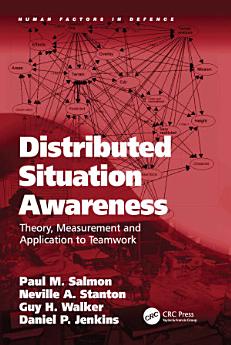Distributed Situation Awareness: Theory, Measurement and Application to Teamwork
Sep 2017 · CRC Press
3.0star
Maoni mojareport
Kitabu pepe
266
Kurasa
family_home
Kimetimiza masharti
info
reportUkadiriaji na maoni hayajahakikishwa Pata Maelezo Zaidi
Kuhusu kitabu pepe hiki
Having an accurate understanding of what is going on is a key commodity for teams working within military systems. 'Situation awareness' (SA) is the term that is used within human factors circles to describe the level of awareness that operators have of the situation that they are engaged in; it focuses on how operators develop and maintain a sufficient understanding of 'what is going on' in order to achieve success in task performance. Over the past two decades, the construct has become a fundamental theme within the areas of system design and evaluation and has received considerable attention from the human factors research community. Despite this, there is still considerable debate over how SA operates in complex collaborative systems and how SA achievement and maintenance is best supported through system, procedure and interface design. This book focuses on the recently developed concept of distributed situation awareness, which takes a systems perspective on the concept and moves the focus on situation awareness out of the heads of individual operators and on to the overall joint cognitive system consisting of human and technological agents. Situation awareness is viewed as an emergent property of collaborative systems, something that resides in the interaction between elements of the system and not in the heads of individual operators working in that system. The first part of the book presents a comprehensive review and critique of existing SA theory and measurement approaches, following which a novel model for complex collaborative systems, the distributed SA model, and a new modelling procedure, the propositional network approach, are outlined and demonstrated. The next part focuses on real-world applications of the model and modelling procedure, and presents four case studies undertaken in the land warfare, multinational warfare and energy distribution domains. Each case study is described in terms of the domain in question, the methodology employed, and the findings derived in relation to situation awareness theory. The third and final part of the book then concentrates on theoretical development, and uses the academic literature and the findings from the case study applications to validate and extend the distributed SA model described at the beginning of the book. In closing, the utility of the distributed SA model and modeling procedure are outlined and a series of initial guidelines for supporting distributed SA through system design are articulated.
Ukadiriaji na maoni
3.0
Maoni moja
Kuhusu mwandishi
Paul M. Salmon, Neville A. Stanton, Daniel P. Jenkins
Kadiria kitabu pepe hiki
Tupe maoni yako.
Kusoma maelezo
Simu mahiri na kompyuta vibao
Sakinisha programu ya Vitabu vya Google Play kwa ajili ya Android na iPad au iPhone. Itasawazishwa kiotomatiki kwenye akaunti yako na kukuruhusu usome vitabu mtandaoni au nje ya mtandao popote ulipo.
Kompyuta za kupakata na kompyuta
Unaweza kusikiliza vitabu vilivyonunuliwa kwenye Google Play wakati unatumia kivinjari cha kompyuta yako.
Visomaji pepe na vifaa vingine
Ili usome kwenye vifaa vya wino pepe kama vile visomaji vya vitabu pepe vya Kobo, utahitaji kupakua faili kisha ulihamishie kwenye kifaa chako. Fuatilia maagizo ya kina ya Kituo cha Usaidizi ili uhamishe faili kwenye visomaji vya vitabu pepe vinavyotumika.







